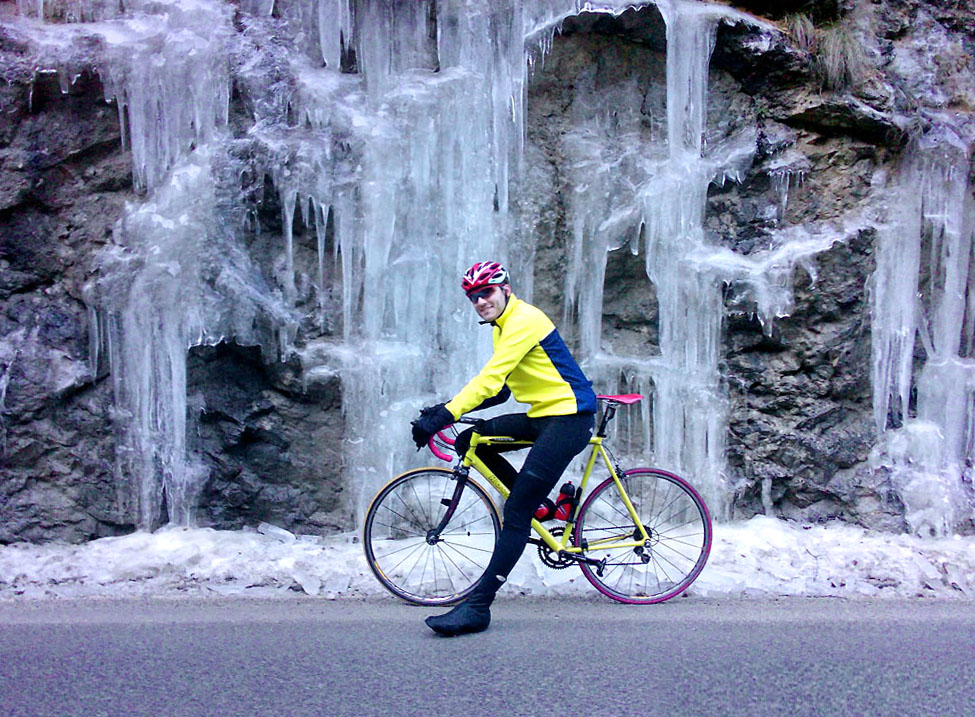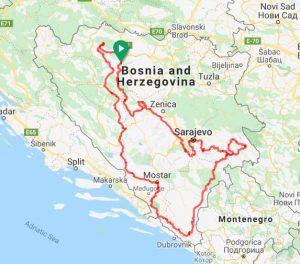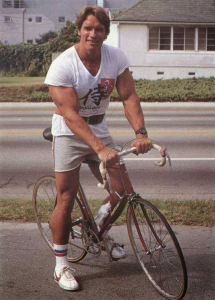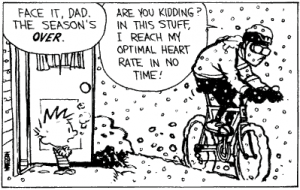As a cycling enthusiast, but also an organizer of events that allow people to push their boundaries, I decided to share my knowledge and experience with those who want to make progress in this form of sport and recreation, especially in the field of long-distance rides – brevets and ultramarathons.
This article, as well as a series of articles that follow, are primarily focused on beginners, but also those who want to be stronger, faster, to overcome climbs easier, cover hundreds of kilometers “in one go” or maybe try cycling in the next season. If you find yourself in one of these categories – you are at the right place! 🙂

Cycling, like sports in general, is a very extensive and complex topic to make something absolutely accurate and correct for everyone. However, there are certain rules on the basis of which every human organism functions. The views I will present here are based on everything I have learned from my coach, as well as over 20 years of training in practice.
Well, let’s start… with an annual rest!

We begin the story of preparations with a rest? It may sound paradoxical but as every machine requires service or reparation after a certain time or period of use, so does the human body, which is a kind of machine that after almost a year of forcing and above-average use requires psychophysical rest. Of course, this means that you had a long and hard season, in which you reached the peak of your form. If you haven’t, you’ve chosen the ideal moment to begin a new one.
As the racing calendar (in the Northern hemisphere) traditionally lasts from the beginning of March to the end of October, the 15-day vacation is mostly done in mid-November, which then leaves enough time for winter preparations followed the by base training. Of course, vacation does not mean that you nail yourself t0 bed for 15 days. Some people use this period for light MTB rides, some for walking, some for some other obligations – weather conditions also play a role. So, this is individual and you will feel the moment when you wake up completely rested and eager for regular activities again.
 In any case, what you need to do in this period is to “browse” the map, event calendars, other people’s rides, as well as your thoughts. In one word – find the motivation (OK, those are three words) and define the main goals for the next season, on the basis of which you will design the training system and according to which your every next day of preparation will be directed.
In any case, what you need to do in this period is to “browse” the map, event calendars, other people’s rides, as well as your thoughts. In one word – find the motivation (OK, those are three words) and define the main goals for the next season, on the basis of which you will design the training system and according to which your every next day of preparation will be directed.
For motivation, take a look at a calendar of races, gran fondos (marathons) and brevets (ultramarathons) in your region. Dates of brevets in the organisation of B-HARD for the year 2021 are 15/May. (200 km), 12/June (200 km), 12-16/June (1200 km) and 4/Sep (200 km).
Also, with my rides, photos and videos, I try to inspire people to ride, so feel free to follow me on the social networks Strava, Instagram, Facebook and YouTube.
Rest is followed by AAA
Whaaat? It is not an anonymous association of alcoholics but alternative aerobic activities. Since this is the term I just coined while writing this text – simply put – it is engaging in other sports. The reason? If during the year you’re spending a lot of time on the bike and only on the bike, certain parts of your body will atrophy (triathletes definitely don’t have this problem). Also, we are now in the phase when we need aerobic activity, i.e. raising the e, to heart rate to feel alive :).

Primarily, what I’m talking about here is running – whether on a treadmill or outside, hiking e.g. walking in the hills and mountains, Nordic walking, Nordic skiing, swimming (thankfully not Nordic), indoor soccer, sepak takraw… whatever you fancy. I didn’t mention skiing on purpose, because it can easily lead to an injury that will ruin your season, but whoever likes – let him choose.
Let’s say you spend two to three days a week (ideally three) on activities of this form, according to the time available. It really shouldn’t be difficult, because the time actively spent in such trainings will generally be between 45 and 90 minutes. On weekends, you will probably be able to afford a more serious multi-hour hike.
Arm wrestling

In parallel (or technically speaking – in series) with the above activities, it is necessary to introduce strength exercises – again for the previous reason of atrophy but also because we want to build a quality foundation which will allow us to build a high-rise building (architects and builders can correct the analogy). First of all, this refers to the gym and – although Arnold Schwarzenegger used to be seen on a bike – you don’t need to try to look like him. And never ever skip a leg day! Jokes aside, there are specific gym exercise programs for cyclists but that is a whole different topic on its own, which we will not tackle this time, so you should google and youtube about it.

What you should especially focus on – whether inside or outside the gym – are “body core” exercises, which are especially important for ultra-distance riding, where you spend a lot of time sitting in the same position. It must have happened to you at least once that you don’t have the strength in your back and arms to maintain an aero position on the bike or you’ve heard about situations when rider’s neck muscles fail and their head drops… That is why exercises that will strengthen the whole torso are important, that is, a complete system from the neck down, along the back, arms and legs – “from head to toe”, so to speak. This is also a topic in itself, so educate yourself further online.
This type of activity also involves two to three workouts per week (ideally three), which effectively last 60 to 90 minutes. That leaves us with a day off – so – an ideal scenario.
When does this end, what’s the word on the street?

The period of winter preparations lasts… well, for the duration of the winter. So, some three months of strength training are projected, while at some point, as you get closer to going out on the road, you will replace the aerobic activity of choice with riding a bike on a turbo-trainer. Let’s say you switch to a turbo trainer from the New Year or mid-January. Another type of stationary bike can be used for this but it is very important that you spend time sitting on your bike and in the appropriate position. Turbo trainers are a topic that we will cover in one of the following articles.
Of course, the assumption is that, in the conditions of moderate-continental climate, it is snowing and / or quite cold outside in winter. If you live in warmer regions or global warming treats us to yet another dry and warm winter – then these trainings can be performed on the road. But by no means should the winter training process and strength and posture exercises be neglected, especially if the nice weather has only presented itself in short bursts.
“An apple a day keeps the doctor away”

In addition to all the physical exercises, jumping, sweating, aerobics, weightlifting, spinning… what you put into yourself (literally) is also important. So, use this period to educate yourself a little bit about nutrition, try to gain healthy habits but preferably try not to gain too much weight (of course, it is to be expected that you will gain weight during this period, unless you are a lucky bugger with perfect metabolism) and later on continue adjusting your diet according to the workouts and rides you will be doing.
That would be all for this occasion. As this period is ideal for some technical interventions on your bike, in the following articles we will deal with another subject, which is as important as the training itself – the choice of a bike and equipment, preparation for the season and position adjustment.
